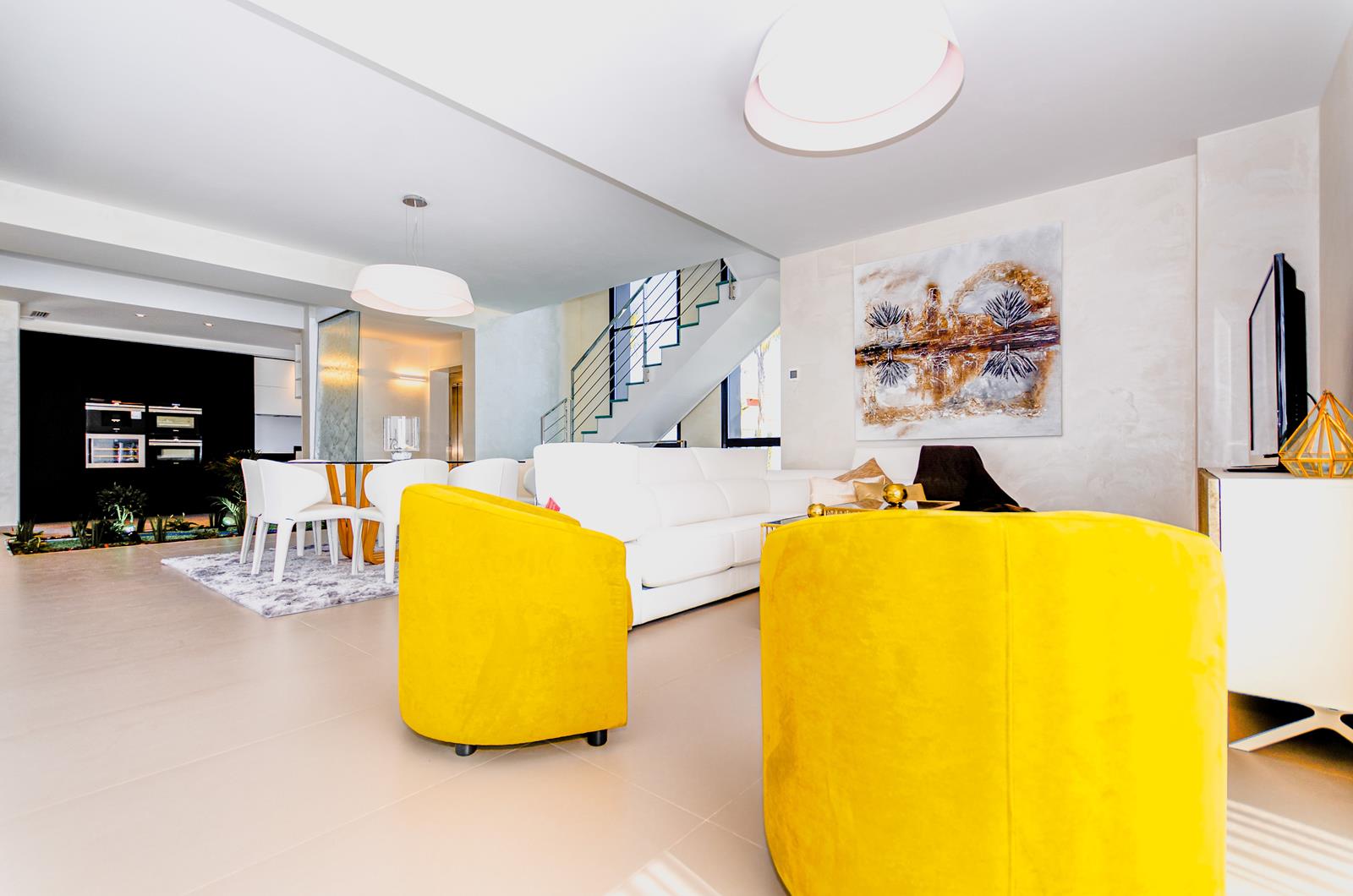
Modern interior design prioritizes open rooms, straightforward lines, and a polished balance of form and function. Its simplicity without sacrificing elegance and its adaptability allow it to mix with many kinds of furniture designs. Choosing suitable furniture style will help to reinforce the present design language in every area. Not in the number of choices, but rather in achieving harmony between architectural goal and furniture pieces, is the challenge. Whether your apartment is mid-century inspired, a contemporary mansion, or a basic loft, selecting furniture that highlights current design concepts will enhance the complete living area. This website offers suggestions on how careful choosing might improve spatial harmony, visual clarity, and everyday comfort as well as many furniture styles that naturally match modern houses.
Mid-Century Modern Elegance
Not many styles as easily suit modern houses as mid-century modern furniture. Defined by its graceful forms, thin legs, and organic materials, this design provides a timeless sophistication that highlights the clean architecture of contemporary houses. Common in mid-century works are warm wood tones, leather, and molded plastics—which have visual appeal without much decoration. These attributes appeal to modern ideas of simplicity and deliberate design.
It is especially suitable as mid-century contemporary furniture is focused on proportion and usefulness. These items are not only aesthetically pleasing but also deftly made with thought for everyday use. The dining sets, credenzas, and couch designs of this style serve to utilize space and provide openness modern houses want. Perfect anchor pieces in a modern home, their combination of timeless beauty and forward-looking design transcends decades.
Scandinavian Simplicity and Function
Scandinavian furniture design naturally fits modern interior trends with its basic approach, light palettes, and natural materials. It stresses simplicity without austerity by favoring smooth edges and useful forms highlighting comfort and calm. Key components of this style are light wood, neutral materials, and meticulous craftsmanship that results in a space airiness and purity.
Scandinavian furniture usually accentuates the simplicity and peace modern households seek for. A Scandinavian sofa with simple fabric and light wooden legs or a dining table with understated decoration may have attractive but modest focal features. These furnishings encourage livability and well-being, thereby supporting the modern opinion that a home should be emotionally anchored as well as visually pleasing. Choosing Scandinavian design means that the inside of houses remain traditional and organically appealing.
Industrial Influence with Contemporary Flair
For those who like a slightly edgy style, industrial furniture offers an intriguing contrast to modern design. Industrial components—exposed hardware, reclaimed wood, and raw materials like steel—give otherwise contemporary settings texture and character. Proper adjustment of this roughness provides the contrast and depth necessary for the polished, usually muted character of modern dwellings.
Integration of industrial furniture largely relies on size and location. Without dominating a space, a concrete-topped dining piece, a metal-leg coffee table, or a leather-accented chair may anchor it. These materials harmonize well with open design and clean finishes by offering a tactile, urban edge. Carefully selected industrial components enable one to design a living-in style that conforms to modern concepts of authenticity and material honesty. The result is a contemporary and very sophisticated design narrative.
Minimalist Forms with Maximal Intent
Modern interior design typically reflects a minimalistic living attitude as much as a design aesthetic choice. Minimalist furniture eliminates unnecessary to focus on essential beauty; it focuses space awareness, balance, and utility. Usually with monochromatic tones, restrained contours, and geometric purity—qualities that fit the structural openness of modern homes—it has a harmonic resonance.
Selecting minimalist furniture means picking purposely simple but never boring pieces. Simple lines on a floating shelf, a low-arm, sleek sofa, or a bed frame with hidden storage all point to the modern preference for visual clarity and functional elegance. Minimalism encourages room to breathe instead than stuffing a location with fancy furniture. This helps the architectural rhythm of a modern home to become more strong and enhances living experience.
Transitional Pieces for Flexible Styling
Transitional furniture links traditional and contemporary styles, therefore offering a versatile choice for modern houses leaning toward warmth and individuality. Combining classic designs with modern finishes, these pieces provide comfort and elegance without being out-of-date. While a transitional chair could have a gently curved shape covered in a neutral, textured fabric, a dining table might have carved legs with a clean glass top.
Modern settings are ideal for transitional furniture as it may soften the often stark lines of purely current design. These objects provide homes nuance and character that allows them create more layered and personalized settings. For people who seek longevity in both design and use, transional furniture is very useful as it adapts very well to evolving tastes. Using transitional components without sacrificing a forward-looking view helps modern rooms acquire depth, texture, and a muted homage to past.
Conclusion
Furniture and modern interior design connect in a reciprocal improving manner. Not only does the right furniture fill a room, but it highlights its lines, improves its functionality, and contributes to its ambiance. Every style offers a new method to understand modern living, whether it’s the peaceful clarity of Scandinavian forms, the rugged attractiveness of industrial accents, the purity of minimalist designs, or the soft grace of transitional designs—the timeless attraction of mid-century modern objects. Modern houses are lovely due of its versatility and goal; so, choosing furniture that represents such characteristics will assist every room to be harmonic and coherent. Emphasizing thoughtful integration instead than trend-chasing will help homes owners create environments that feel both current and timeless. In the end, furniture not only serves functions but also expresses our beliefs, way of life, and how we like our surroundings to encourage and inspire us every day.